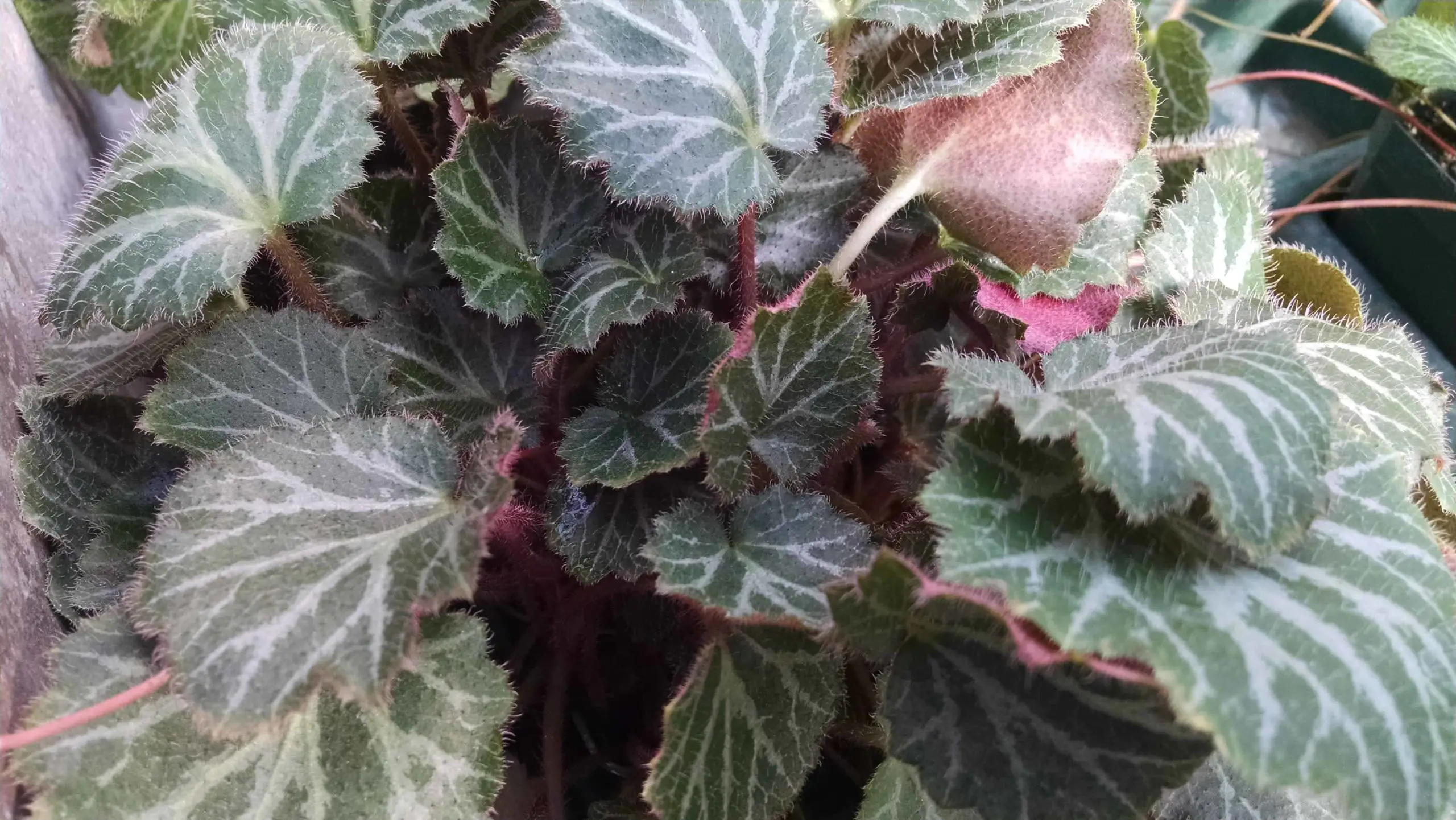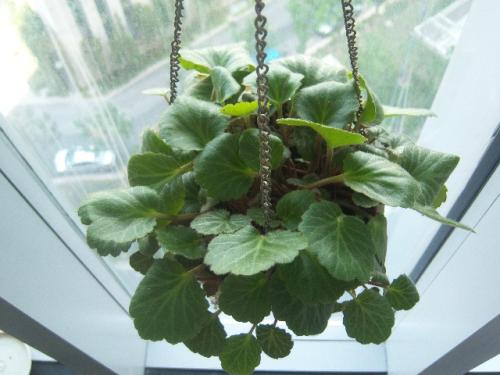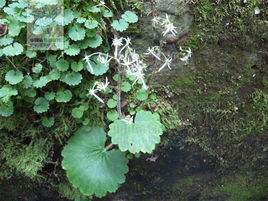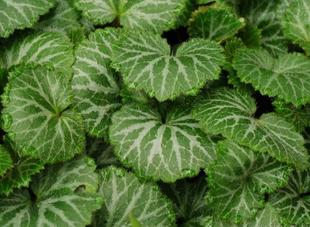How to grow and care for Strawberry Begonia (Saxifraga Stolonifera)
Written by Maggie
Nov 12 2021

When we grow and care for Strawberry Begonia, Strawberry Begonia requires a 5:3 mix of leaf mould and sand, a growing environment ranging from 15 ° C to 25 ° C, a minimum winter temperature of 5 ° C, nitrogen fertilizer applied every 20 days, and daily care to keep the soil moist and the pot soil moist. The following are tips for growing and caring for Strawberry Begonia.

Strawberry Begonia Quick Info
| Botanical/Scientific Name | Saxifraga Stolonifera |
| Common Name | Strawberry Begonia |
| When to Grow/Bloom/Harvest | Indoors during any time of the year |
| Uses | Ground cover |
| Origin | China, Japan and Korea |
| Light Care | Bright but not direct sunlight |
| Soil Care | Fast-draining potting soil |
| Temperature Care | Between 50 degrees Fahrenheit and 75 degrees Fahrenheit |
| Humidity Care | 40-50% relative humidity |
| Watering | Watering sparingly |
| Pruning Care | Remove yellow, dead, dying or damaged leaves |
| Fertilizer Care | Fertilizing monthly during the growing season |
| Propagation | Sowing and division |
| Toxic | Non- poisonous |
| Flower Color | White |
When to Plant Strawberry Begonia
Strawberry Begonia is more suitable for planting in spring and autumn. It is generally selected after falling leaves in autumn, while it is generally selected before plant germination in spring. During spring sowing, strawberry begonia seeds need to be treated with low temperature for one to three months, and then the seeds are sown into wet soil. After the seeds germinate, replant the seedlings into the flower pot and keep the soil moist. Then we can gradually move the strawberry Begonia to a place with good light for growth.When does Strawberry Begonia Bloom & Harvest
The natural flowering period of strawberry Begonia is from July to September. For the varieties cultivated now, and through the rapid cultivation in the greenhouse, florists can control the flowering period of strawberry Begonia at an appropriate time throughout the year. In addition to the high temperature in summer and the cold period in winter, strawberry Begonia can be seen in full bloom in the flower market.Strawberry Begonia Care in Detail
Strawberry Begonia Watering
Strawberry Begonia cannot be watered from leaves or flowers, but directly in the soil. In daily maintenance, water should be poured every two days during the growth period, and frequently in summer. If the climate is dry, water can be poured twice a day. Generally, do not water the newly purchased strawberry Begonia immediately until it is adapted to the environment. For strawberry Begonia who wants to change the basin, we can generally pour water once after changing the basin.Potted maintenance strawberry Begonia is most afraid of over-watering. The most common way to die for indoor maintenance of potted Begonia is to water too often. You should wait until the soil 3 ~ 5cm below the soil surface is dry and then water it.
When watering strawberry Begonia, we should avoid watering on the leaves. If the leaves and branches are wet for a long time, the leaves are easy to rot and induce fungal diseases. If we find water on the tray, we should pour it out in time, and don't spray water directly on the flowers.
Strawberry Begonia Light
You can place strawberry Begonia on a ventilated and transparent balcony or windowsill. In summer, avoid exposure to the sun or excessive direct sunlight. They only need appropriate scattered light to grow well. Strawberry Begonia is not resistant to cold. It is easy to hang up if it experiences frost, and the minimum maintenance temperature should be kept above 7 degrees.Strawberry Begonia Humidity
Strawberry Begonia likes high air humidity. If the room is dry, it needs to be increased appropriately, especially in winter.In winter, it is usually dry to turn on the indoor heating, so we can take some measures to increase the indoor humidity and promote the growth of strawberry Begonia. We can turn on the humidifier around, or put the plants on the pebbles filled with water, which can be placed on the tray.
You can install a hygrometer at home, check the relative humidity in the room, spray water around the room, keep a certain air humidity, but avoid direct spraying Strawberry Begonia flowers and leaves.
Strawberry Begonia Pruning
Before each strawberry Begonia pruning, we need to prepare a pair of sharp scissors without rust. If the scissors are not sharp enough, it is easy to damage the plant epidermis during pruning. It affects its ornamental value. Each time strawberry Begonia is trimmed, the scissors shall be cleaned, and then carbendazim shall be sprayed or alcohol shall be applied for disinfection to prevent bacteria from infecting the trimmed wound.When strawberry Begonia is growing, how can strawberry Begonia be pruned? If we find that the branches of Begonia are too dense, we can quickly cut off its inferior branches. If we find that the branches are skewed, we can also prune them appropriately, so as to make their growth more ornamental value and prevent diseases and pests.
Strawberry Begonia Repotting
Strawberry Begonia repotting is generally appropriate in April. The plant can change the basin soil once every 2-3 years. We need to suspend watering 1-2 days before the strawberry begonia repotting to make the basin soil dry, so as to separate the basin soil from the basin wall and facilitate the operation.When changing pots, small and medium-sized flowerpots can be gently knocked around the flowerpot by hand to slightly separate the pot soil from the flowerpot, and then pour the flowerpot and the plant to one side. At this time, we can hold the plant with one hand, and push the plant inward with thumb or stick from the drainage hole at the bottom of the basin or gently buckle the bottom of the basin, so as to pour out the plant with the soil lump. If it is a perennial flower, it is necessary to shovel off a layer of perennial soil at the shoulder of the original soil lump and the surrounding outside, cut off dead branches, curly roots and some old roots, fill new culture soil in the big one basin, and plant strawberry Begonia in it; For woody flowers, part of the original soil lump can be properly removed, and the old withered roots can be cut off. Generally, it should also be planted in the larger pot, and pay attention to adding new culture soil.
Strawberry Begonia Soil care
Japanese Strawberry Begonia preferred soil that was rich in substrate and capable of strong drainage, so a 5:3 ratio of leaf decaying soil and sandy soil was preferred. A few small stones could be placed on the surface of the soil to increase moisture retention, or it could be grown directly on sandy soil for looseness.
Strawberry Begonia Temperature care
Temperature is important when we grow and care for Strawberry Begonia. The Strawberry Begonia fight cold ability is very poor, like warm growing conditions. So when we grow and care for Strawberry Begonia, we need to control the temperature between 15 °C and 25 °C is most appropriate, which is conducive to the Japanese Strawberry growth of Begonia. In winter the minimum temperature is not lower than 5 ℃ or root easy to appear the phenomenon of frostbite.
Strawberry Begonia Fertilizering care
Strawberry Begonia was fertilized with nitrogen fertilizer every 20 days during its vigorous growth period, which would have led to over nourishment if summer temperatures were above 25 ° C and winter temperatures were below 10 ° C.
Strawberry Begonia wet environment care
When we grow and care for Strawberry Begonia, Strawberry Begonia is made to grow in moist conditions, especially in the summer and winter, where the leaves are lustrous and grow better with increased air humidity, either by sprinkling the leaves or by placing a water bowl around them, both of which help keep the moisture in the room.
Strawberry Begonia care for common insect pests control
Pests
Strawberry Begonia was damaged by mealybugs, which caused the plant to grow slowly. The plant was moved to astigmatism and ventilated, and weeds were treated promptly. Strawberry Begonia was treated with metholipide and kunggotrin emulsion.
Aphids
Actually Strawberry Begonia are easily subjected to the harm of aphids, the Strawberry Begonia common pests and prevention method. It will absorb nutrients through the branches and leaves of plants, also can make poor plant growth, finally kill the plants withered. When we grow and care for Strawberry Begonia, first of all we need to deal with the artificial aphid, then spraying the plants with marathon emulsion, deltamethrin emulsion, etc. It is good to control.

Mealworms
Under normal conditions, the harm of mealybugs is similar to that of mealybugs and aphids, but it's vitality is relatively strong. If it is not treated in time, it will affect the fruit yield of the plant and the normal growth of the plant. Therefore, when we grow and care for Strawberry Begonia, it is necessary to strengthen the ventilation management and spray the pesticide control such as aphids.
Land tigers
Strawberry Begonia was also vulnerable to ground worm damage if the soil was not replaced for long enough to prevent the plant's roots from growing in the soil, requiring timely replacement and spraying of dichlorvos and carbendazim.
Strawberry Begonia Propagation
Strawberry Begonia Propagation from Cutting
First, we need to cut a branch with a length of 8 cm to 10 cm from the strawberry Begonia plant, cut off some leaves at the bottom, and then cut it directly into 1 / 3 of the soil. Secondly, put a plastic film on the outside of the flowerpot, block 50% to 70% of the sun, and spray it with water once every 2 to 3 days. Finally, we can keep the temperature of the pot between 20 and 25 degrees, and take root in about two weeks.
Strawberry Begonia Propagation from Division
Strawberry Begonia propagation from division is the most simple and easy method. Strawberry Begonia is usually used for reproduction. We can cut the germinated tubers longitudinally, each with 1 to 2 buds. After the incision is dried, we can plant them in a pot. We should pay attention to maintaining high environmental humidity and temperature from 20 ℃ to 25 ℃ in order to achieve better results.
Strawberry Begonia Propagation from Seed
Strawberry Begonia propagation from seed is suitable for spring and autumn, and we should select the fresh seeds collected in the current year, evenly sprinkle the seeds into the basin soil and flatten them, soak them in water, cover them with glass and keep the room temperature at 20-22 ℃. It will sprout in a week.
Strawberry Begonia Benefits
Strawberry Begonia is often planted in damp corners. It is characterized by short plants and many flowers. Garden decorators often decorate strawberry Begonia on the window balcony. It is a very pleasant garden plant. We can use the whole grass of strawberry Begonia as medicine. It is cool and slightly bitter. People often pick it in summer and autumn, and colored fruit can be obtained in early winter. Decocting medicine orally has the effects of treating colds and clearing heat and promoting diuresis. Strawberry Begonia also has the functions of promoting blood circulation, relieving cough, helping digestion, strengthening spleen and stomach and relieving alcohol.
Strawberry Begonia care for leaves yellowing
1. Watering care for growing Strawberry Begonia. Keep the pot soil constantly moist to prevent the pot soil from drying.
2. In summer, we should often spray water to the foliage and the surrounding ground to enhance the air humidity.
3. Light care for growing Strawberry Begonia. In summer it needs to be placed under the shade for maintenance.
4. In the growth season every half a month to pour 1 time thin cake fertilizer water.
5. The room temperature should be kept at about 12℃ in winter to avoid cold.

Latest Updated
- Benefits of Bugleweed - 7 Science-backed Health Benefits
- Bugleweed Dangers & Side Effects - Is It Poisonous?
- How to Plant Evergreen Trees - What You Should Know
- When to Plant Evergreens - Grow Guide for Evergreen Trees
- 12 Wonderful Evergreen Shrubs for Your Garden
- 12 Popular Evergreen Plants with Pictures for Beginners
- When And How To Prune A Lilac Bush Like a Pro
- How to Grow & Care for Lilac Vine (Hardenbergia Violacea)
- Japanese Lilac Tree (Syringa Reticulata) Care & Propagation Guide
- Shumard Oak Pros and Cons - What to Know
Popular Articles
- Winter maintenance of Antirrhinum Majus
- How to Grow Terminalia Mantaly Tree
- How to Grow and Care for Crossostephium Chinense
- How to grow Antirrhinum Majus in spring
- Peristeria Elata (Dove Orchid) Profile: Info & Care Guide
- Underwatered Snake Plant (Sansevieria Trifasciata) - Signs And How To Fix
- How to Care for Brazilian Jasmine Plant (Mandevilla Sanderi)
- How to Grow & Care for Graptopetalum Purple Delight in Summer
- Rosa Chinensis (China Rose): Plant Growing & Care Tips
- How to Care for Baby Sun Rose (Aptenia Cordifolia)